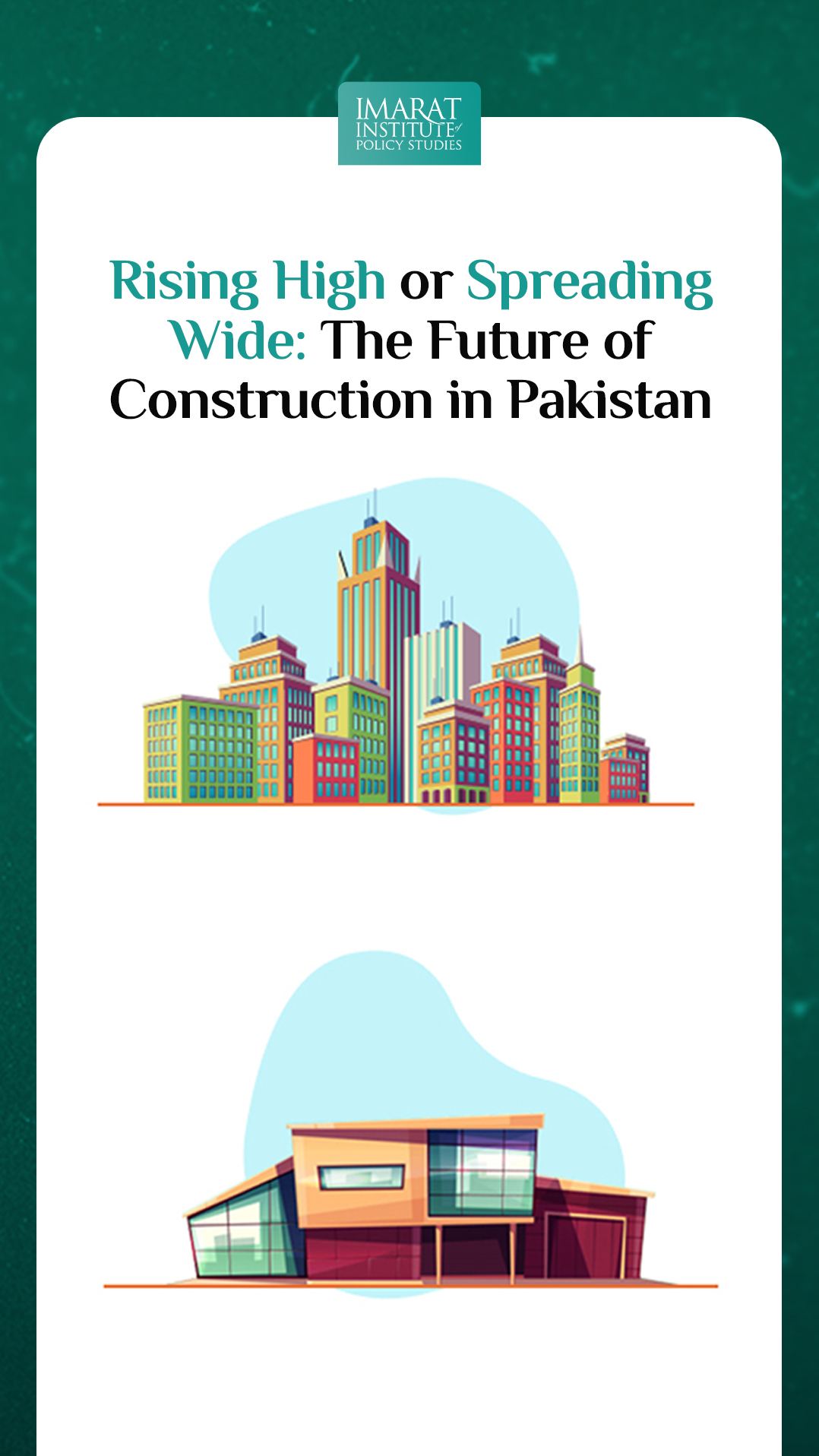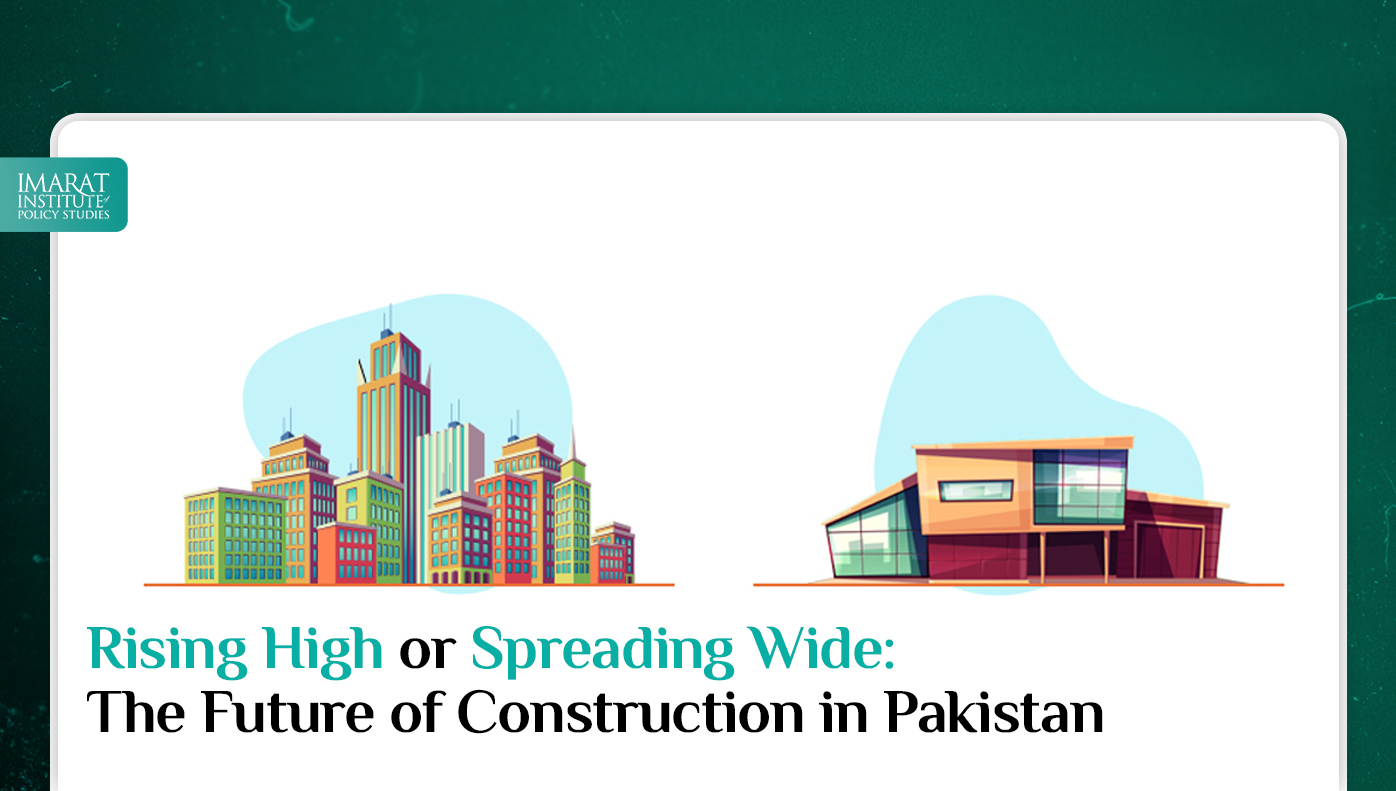Pakistan’s urban landscape is at a crossroads, with its rapidly growing population and evolving economic dynamics shaping the future of its construction industry. The debate between vertical and horizontal construction is not just about architectural preference but reflects deeper socio-economic, environmental, and spatial considerations. This blog delves into the pros and cons of both approaches, examining which path Pakistan should take for a sustainable and prosperous future.
The Case for Vertical Construction
Maximizing Limited Space
In densely populated urban centers like Karachi, Lahore, and Islamabad, space is a premium commodity. Vertical construction, or building upwards, offers a solution to accommodate more people and facilities within limited land areas. High-rise residential and commercial buildings can house thousands of individuals and businesses, making efficient use of scarce urban land.
Economic Benefits
Vertical construction can drive economic growth by concentrating businesses and services in compact areas. This proximity boosts productivity and innovation by facilitating easier networking and collaboration. Additionally, high-rise buildings often become landmarks, enhancing the city’s global appeal and attracting foreign investment.
Environmental Considerations
Building upwards can potentially reduce the urban sprawl that eats into agricultural land and natural habitats. By keeping urban development contained, vertical construction helps preserve the surrounding environment and biodiversity. Moreover, modern high-rise buildings are often designed with green technologies, such as energy-efficient systems and rooftop gardens, contributing to a more sustainable urban ecosystem.
Infrastructure Efficiency
Vertical living can lead to more efficient public services and infrastructure, including transportation, water, and energy. Concentrating population and business activities in smaller areas makes it easier and more cost-effective to provide and maintain essential services.
The Challenges of Vertical Construction
Social and Cultural Factors
High-rise living may not align with Pakistan’s traditional lifestyle and social values, which emphasize community and family connections. The transition to vertical living requires adjustments that may not be welcome by all segments of society.
Safety Concerns
Pakistan is a seismically active country, making earthquake resilience a critical consideration in construction. High-rise buildings require advanced engineering and materials to ensure safety, which can significantly increase construction costs.
The Case for Horizontal Construction
Cultural Compatibility
Horizontal construction, or spreading out, is more in tune with Pakistan’s traditional living arrangements, offering spacious homes with courtyards and gardens. This approach supports extended family living and maintains cultural practices.
Disaster Resilience
Low-rise structures are generally considered safer in earthquake-prone areas, as they are less likely to suffer catastrophic damage during seismic events. This makes horizontal construction an appealing option for many regions in Pakistan.
Flexibility and Scalability
Horizontal development allows for greater flexibility in land use and planning. Communities can expand outward as needed, and individuals have more control over their living spaces, including the ability to grow food or maintain green spaces.
The Challenges of Horizontal Construction
Urban Sprawl
Spreading out can lead to uncontrolled urban sprawl, consuming agricultural land and natural habitats. This sprawl increases commute times, contributes to traffic congestion, and necessitates larger investments in infrastructure to connect dispersed communities.
Resource Inefficiency
Horizontal development requires more infrastructure per capita, including roads, utility lines, and public services. This can lead to inefficiencies and higher costs for both governments and residents.
The Future of Construction in Pakistan: A Balanced Approach
The debate between vertical and horizontal construction in Pakistan does not have a one-size-fits-all solution. Instead, a balanced approach that considers the unique needs and constraints of each region is essential. Urban centers with limited space may benefit more from vertical construction, while suburban and rural areas may find horizontal development more suitable.
Incorporating sustainable building practices, such as green architecture and energy-efficient designs, is crucial regardless of the construction direction. Additionally, engaging communities in the planning process ensures that development aligns with social, cultural, and economic needs.
Conclusion
The future of construction in Pakistan lies in adaptive, resilient, and sustainable development strategies that respect both the environment and the rich cultural heritage of the nation. By carefully weighing the benefits and challenges of vertical and horizontal construction, Pakistan can pave the way for a future that is not just about rising high or spreading wide, but about building wisely and well.
This article is written by Radma Nouman. Radma is a research analyst at the Iqbal Institute of Policy Studies (IIPS).



Leave a Reply